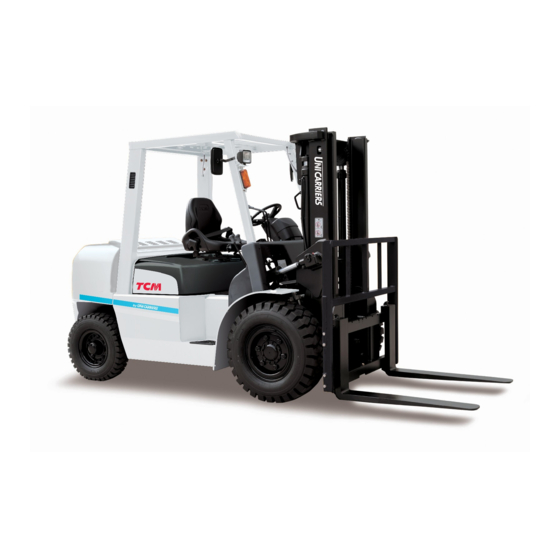
Table of Contents
Advertisement
川 二
w
十
N o . M E F ‑ 4 3 A A E
TCM~
. . . .
n
塁
W O R K S H O P M A N U A L
F O R K L I F T TRUCK
︿
︿
O
刃 ス
ω
工
O
刀
豆
﹀
Z
C
﹀
﹁
ト 一 一
F D 3 5 T 9
F D 4 0 T 9
F D 4 5 T 9
F D 5 0 T 9
F D 3 5 c 9
F D 4 0 C 9
F D 4 5 c 9
F G 3 5 T 9
F G 4 0 T 9
明
H
U
U
師
︒
曲
目
2
u
刷
︒
a
‑
H
O
ω
帥
・
﹃
岨
唱
刊
の
品
0
4
d
TCM C O R P O R A T I O N
Z
0 ・
豆
m
明 ム
‑ ω
﹀
﹀
m
TCMc
仰
O R A T I O
二
ト
Advertisement
Chapters
Table of Contents











Need help?
Do you have a question about the FD35C9 and is the answer not in the manual?
Questions and answers
На панели приборов есть переключатель режимов MODE H , MODE L,что это